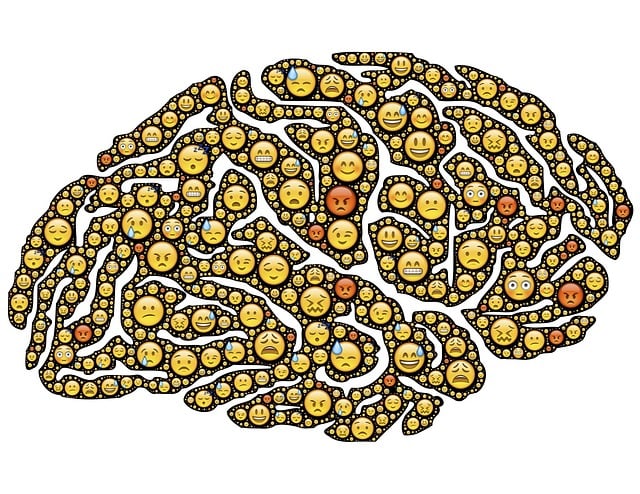Arvada Dissociative Disorder Therapy (ADDT) prioritises client safety through comprehensive risk assessment, identifying potential harms and developing tailored coping strategies. This process involves understanding clients' histories and disorder-specific factors to foster a healing environment. Harm minimization plans are strategic multi-faceted approaches integrating communication, emotional regulation techniques, and mental health education. Regular client evaluations and adaptive interventions ensure safety, empowering individuals to manage symptoms confidently while fostering long-term well-being.
In the field of mental health, especially within Arvada Dissociative Disorder Therapy, risk assessment and harm minimization planning are cornerstone practices for ensuring client safety. This article delves into these critical components, starting with a foundational understanding of risk assessment in therapy. We explore common harms associated with dissociative disorder treatments and provide guidance on crafting robust harm minimization plans. Additionally, we discuss the ongoing implementation and evaluation process to maintain a secure therapeutic environment in Arvada.
- Understanding Risk Assessment: A Foundation for Safe Therapy Practices
- Identifying Potential Harms Associated with Dissociative Disorder Therapy
- Developing a Comprehensive Harm Minimization Plan
- Implementation and Continuous Evaluation: Ensuring Client Safety in Arvada Dissociative Disorder Therapy
Understanding Risk Assessment: A Foundation for Safe Therapy Practices

Understanding Risk assessment forms the bedrock upon which safe therapy practices for Arvada Dissociative Disorder Therapy rest. It involves a meticulous evaluation of potential dangers and their likelihood, allowing therapists to anticipate and mitigate risks effectively. By critically examining various factors—including the client’s history, current state, and the nature of the disorder—therapists can create tailored strategies that focus on coping skills development and anxiety relief. This proactive approach ensures a safe environment conducive to healing.
Risk assessment is not just about identifying hazards; it empowers therapists with valuable insights to implement empathy building strategies. By recognizing individual vulnerabilities, therapists can offer targeted interventions, fostering a sense of security and trust. Ultimately, this process enables clients to engage in therapy with confidence, knowing their well-being is prioritized throughout the therapeutic journey.
Identifying Potential Harms Associated with Dissociative Disorder Therapy

Identifying potential harms associated with Arvada Dissociative Disorder Therapy is a critical step in harm minimization planning. While therapy aims to alleviate symptoms and improve quality of life, there are unique challenges. For instance, dissociation itself can be a coping mechanism used by individuals to avoid traumatic memories or emotions, making it essential for therapists to understand the extent and purpose of this disorder. Improperly managed, intense emotional states may arise during therapy, potentially leading to re-traumatization if not handled with care. Therefore, therapists must prioritize patient safety and incorporate strategies for managing these complex emotional responses.
Self-Care Practices and Self-Awareness Exercises play a pivotal role in mitigating risks. Patients should be encouraged to engage in activities that foster resilience and promote healthy coping mechanisms outside of therapy sessions. Additionally, helping individuals develop heightened self-awareness can facilitate their ability to recognize and manage dissociation more effectively. Further, focusing on Depression Prevention strategies is crucial as dissociation may be linked to depressive symptoms; early intervention and support can significantly impact long-term mental health outcomes for individuals seeking Arvada Dissociative Disorder Therapy.
Developing a Comprehensive Harm Minimization Plan

Developing a comprehensive harm minimization plan is a multifaceted process that requires careful consideration and strategic design. For individuals with Arvada dissociative disorder therapy, this involves crafting an action-oriented approach to mitigate potential risks and promote healing. The first step is to assess the unique needs and challenges of those affected, incorporating feedback from both clients and healthcare professionals. This includes identifying triggers, understanding coping mechanisms, and recognizing behaviors that may indicate escalating issues.
Once these factors are mapped out, a tailored plan can be developed. This might encompass various strategies such as implementing effective communication practices to foster open dialogue about concerns, integrating compassion cultivation techniques to enhance emotional regulation skills, and designing mental health education programs that promote self-awareness and resilience. By combining these approaches, a robust harm minimization framework emerges, offering support systems and tools to empower individuals in managing their well-being effectively.
Implementation and Continuous Evaluation: Ensuring Client Safety in Arvada Dissociative Disorder Therapy

The successful implementation of Arvada Dissociative Disorder Therapy involves a robust framework for continuous evaluation and client safety. This process ensures that individuals receiving treatment remain at the forefront of consideration, with their well-being as the paramount priority. Through regular assessment, therapists can identify any emerging risks or changes in the client’s condition, allowing for prompt intervention.
A key component of this strategy is integrating conflict resolution techniques and mindfulness meditation practices into the therapeutic process. These tools not only foster mental wellness but also provide clients with valuable coping mechanisms to navigate their symptoms effectively. By continuously gauging progress and tailoring interventions accordingly, therapists can offer a dynamic and adaptive approach, ultimately enhancing client safety within the context of Arvada Dissociative Disorder Therapy.
Arvada Dissociative Disorder Therapy requires a robust risk assessment and harm minimization planning framework to ensure client safety. By understanding the foundational principles of risk assessment, identifying specific harms associated with this therapy, and developing comprehensive strategies for mitigation, therapists can confidently navigate the unique challenges posed by dissociative disorders. Continuous evaluation is vital to adapt plans as clients’ needs evolve, ensuring a safe and effective therapeutic environment in Arvada.














